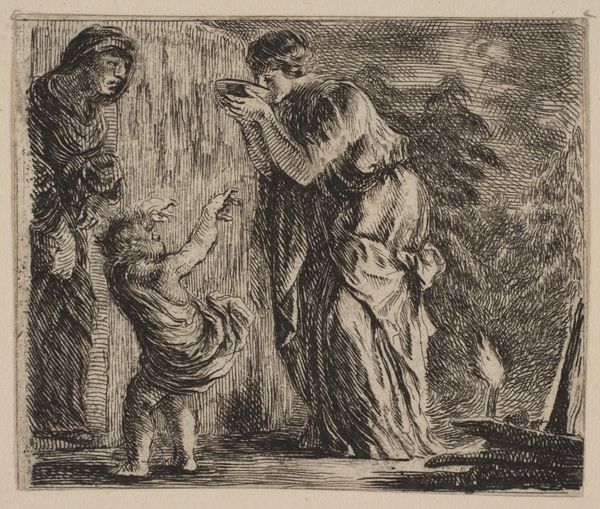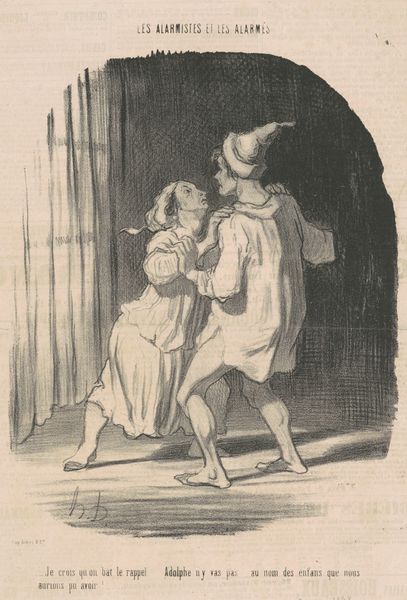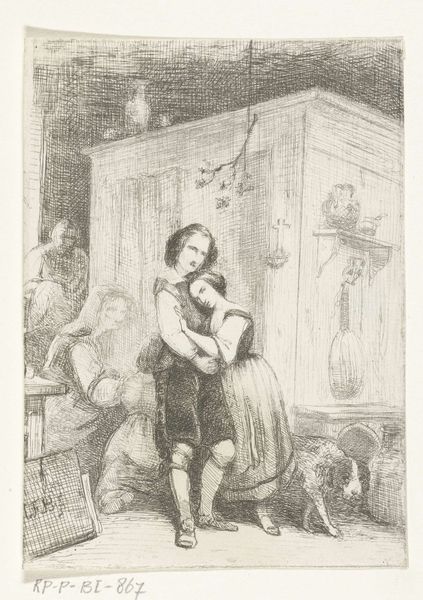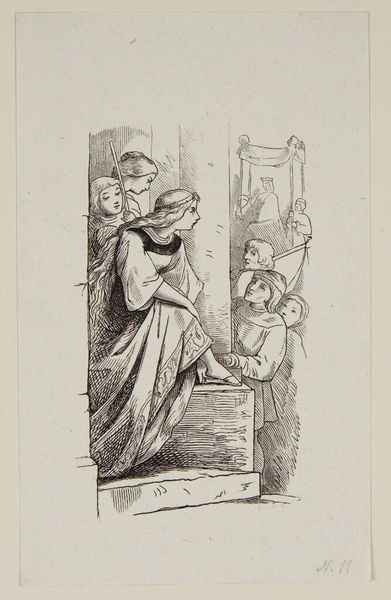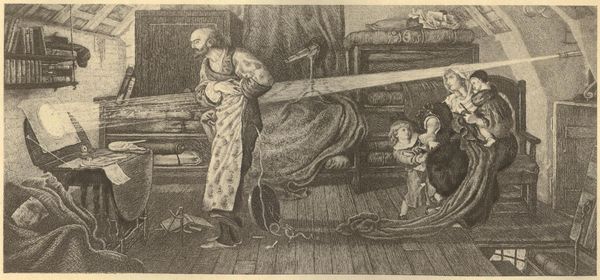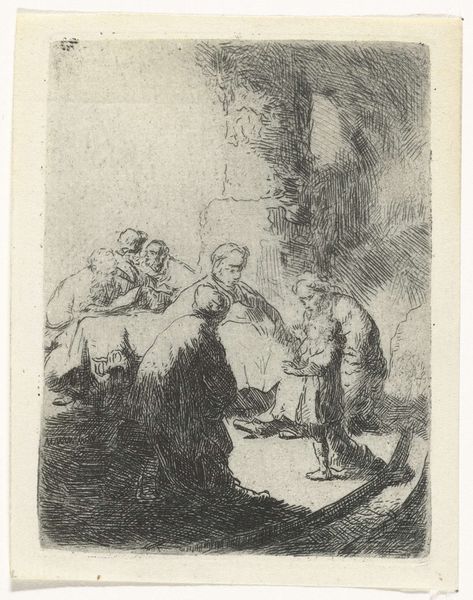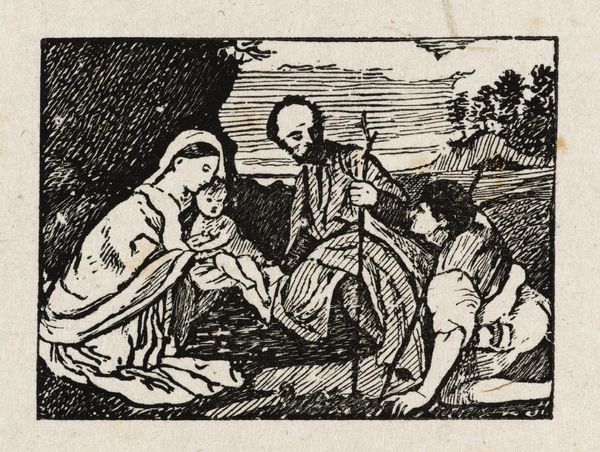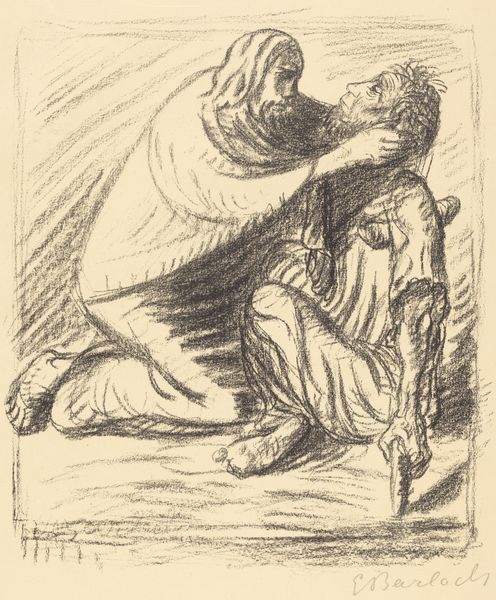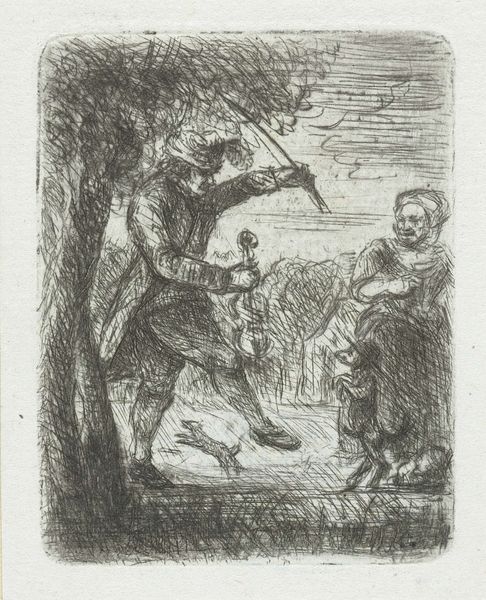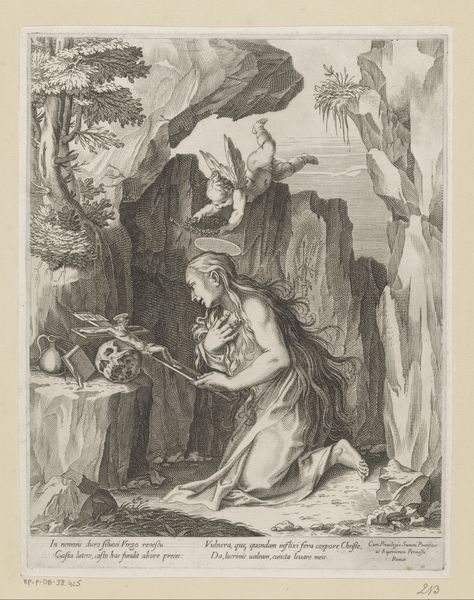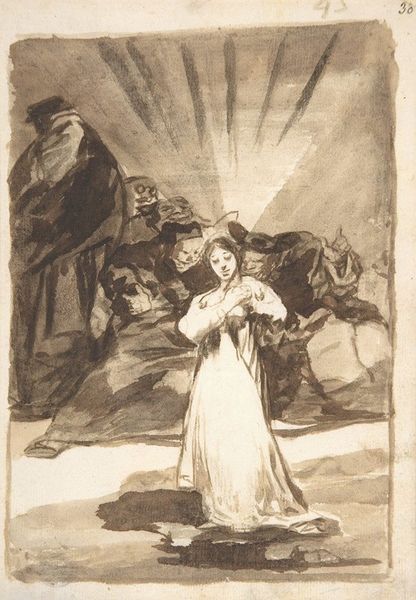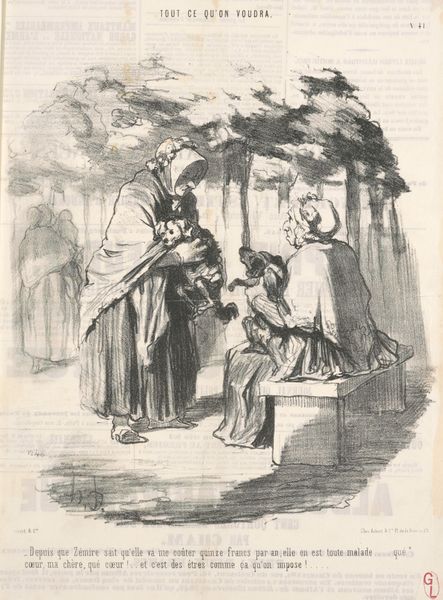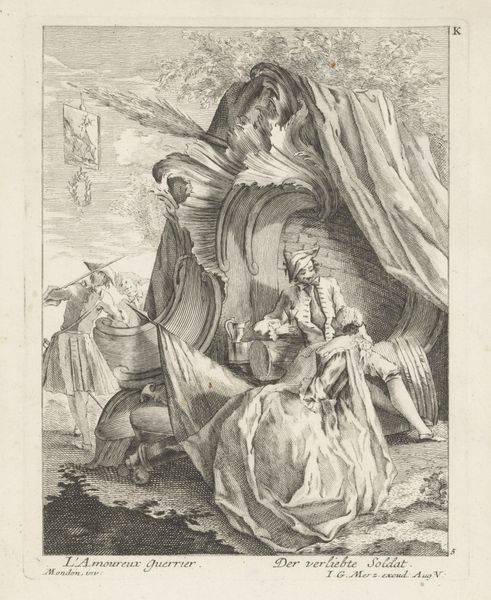
print, etching
#
baroque
# print
#
etching
#
figuration
#
history-painting
Dimensions: 1 7/8 x 2 3/16 in. (4.76 x 5.56 cm) (sheet)
Copyright: Public Domain
Curator: Here we have "Ceres," an etching by Stefano della Bella, dating back to the 17th century. You can find it here at the Minneapolis Institute of Art. Editor: The mood is immediately somber. The heavy cross-hatching in the etching suggests a nocturnal setting, maybe a ritual taking place under the cover of darkness. Curator: Della Bella was a master of the etching technique. Look at the fineness of the lines! And notice how he used variations in line weight and density to create form and suggest different textures. Etching, as a process, allowed for the relatively quick reproduction of images, making art accessible to a broader audience beyond the wealthy elite. Prints like these were circulated as independent artworks but also were included as illustrations in books, and albums. Editor: Indeed. The central figure, presumably Ceres, the Roman goddess of agriculture, drinks from a bowl. The gesture, its prominence within the composition suggests purification, offering, or libation. The reaching child and the veiled figure heighten the mystery—we're in the presence of ancient rites and beliefs. It really pulls the viewer in; there's an aura of reverence that's very compelling. Curator: Absolutely, and we need to think about who would consume such a print. This imagery drew on classical mythology, indicating a learned, literate audience, but the relative affordability of prints also allowed people beyond elite classes to be acquainted with classical themes. Editor: The placement of figures too. The viewer's eye moves upwards from the scattered sheaves on the ground to the action surrounding Ceres. What's intriguing is the emotional complexity Della Bella manages to convey. There's reverence, of course, but also a sense of underlying melancholy and the acceptance of the natural cycles of death and rebirth. It has a haunting quality. Curator: Looking closely at the material properties, at the lines, we appreciate that it's precisely the skilled manipulations of materials and labor through the etching process that enable the artwork's symbolic density and powerful, layered meaning. Editor: It gives one much to consider: classical symbolism re-contextualized in a 17th-century artistic frame. Curator: A wonderful demonstration of how close material process and conceptual symbolism are so thoroughly interlinked.
Comments
No comments
Be the first to comment and join the conversation on the ultimate creative platform.
